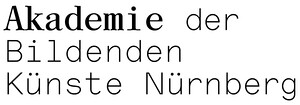Live Art Forms is a newly created postgraduate master’s program teaching performative and aesthetic practices across various disciplines and media—within and beyond visual and performing arts.
The program is designed to enable participants to initiate, organize, and present an individual or collaborative artistic practice foregrounding the multidimensional space that digital and technological platforms constitute, moving bodies immersed in networks, and fragmented yet interwoven planetary publics. The teaching language of the program is English.
The courses are structured along three axes—Techne, Soma, and Geos. These yield the artistic and discursive space in which performative practices position themselves, are immersed, and from which they launch and are made public.
Techne focuses on the use of contemporary technologies and media that support and host performative practices. It situates the artists’ live work in mixed and virtual realities, on a multiplicity of devices, as well as digital platforms. Courses contextualize students’ work by means of theoretical and artistic texts, writing practices, scoring and coding in human and machine languages.
Soma places the body as a system at the center of artistic work and teaches expanded dramaturgies, movement- and body-based practices, choreography, embodied concepts and incorporated communal, infrastructural and planetary metabolisms.
Geos supports the individual mapping of the threads of students’ practices—understood as navigating a path from one position to the next, from one instance of making-public to the other. These pathways are taught as a sequence of positions across disciplines, media and genres by negotiating the complex and multiplying vector space of contemporary aesthetic practice.
The program features a uniquely structured course load with phases of intense, concentrated learning to accommodate students’ work both within and beyond the studios and stages of the academy. The course structure consists of a total of four one-month-long teaching phases in the fall, winter, spring and summer over the academic year. These phases require students’ presence on campus at the Academy of Fine Arts in Nuremberg. They alternate with longer phases of more independent off-campus study, in which teaching is organized via digital platforms, facilitating regular exchange between mentors and students on their projects’ development. The campus-centered yet essentially low-residency character of the program allows participants to maintain their already established networks and pursue their individual projects independently in a global context.
A group of visiting professors and mentors from within and outside the academy ensure a multiplicity of worldviews, contexts, identities, and practices across disciplines and media to relate to students’ artistic work. As students themselves are involved in the process of proposing and choosing new mentors and visiting professors, their specific practice-oriented interests are addressed uniquely.
The master’s program is aimed at students with at least a first university degree. This includes graduates in all disciplines from art academies, as well as graduates from any other discipline or school who hold a BA or comparable degree with minimum three years of study, and documentation of at least one year of professional experience.
The program starts October 2021.
The Academy of Fine Arts Nuremberg (AdBK Nuremberg) provides excellent study and research opportunities to around 300 students and brings together a diverse range of creative practices under one roof. In addition to students’ individual artistic development, we promote transdisciplinarity, diversity and cultural open-mindedness. We have been nurturing the artistic and creative ambitions of our students and staff for over 350 years. The Academy is situated in a transparent and light-filled pavilion architecture that harmoniously blends into its surroundings—successfully combining studios, workshops and facilities.



